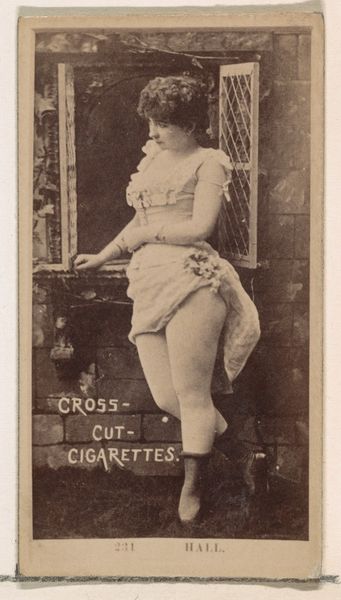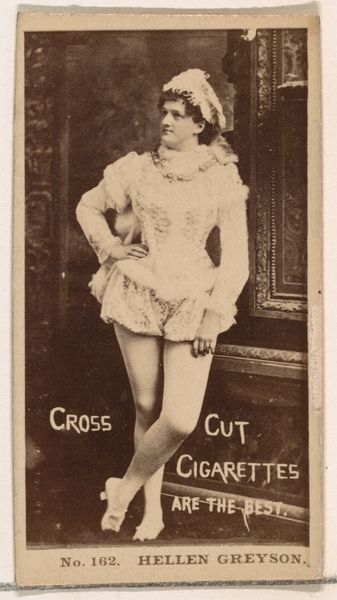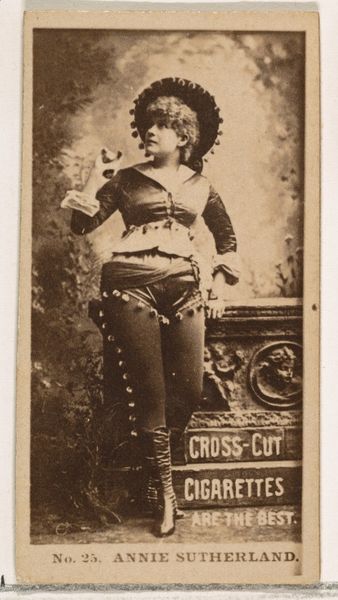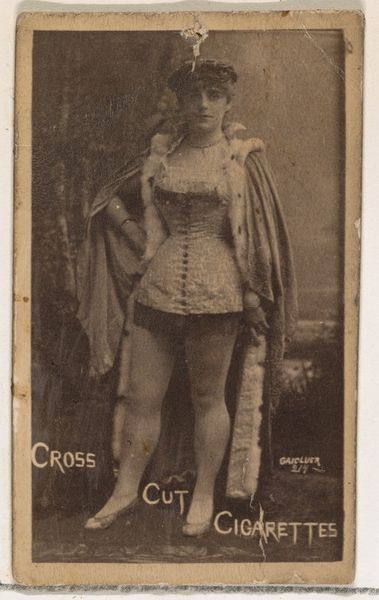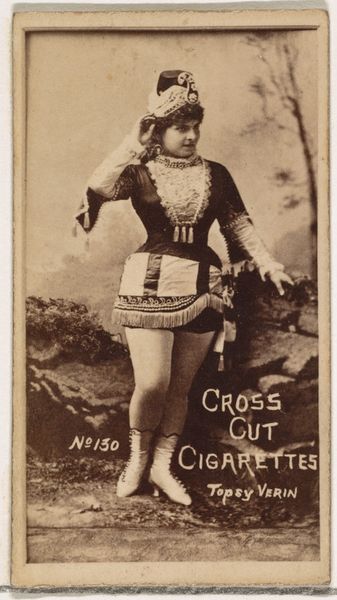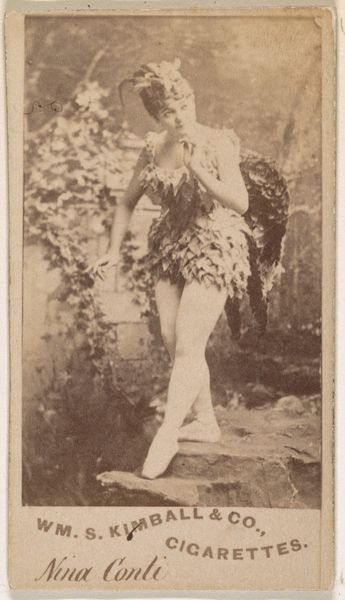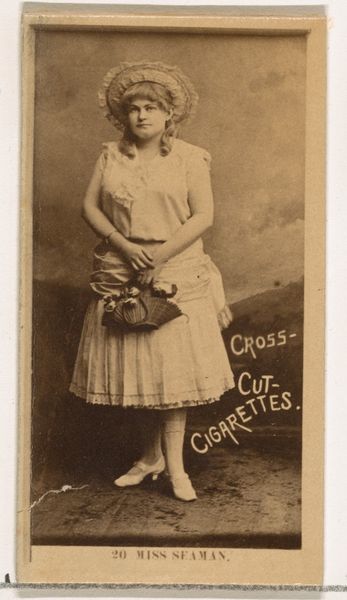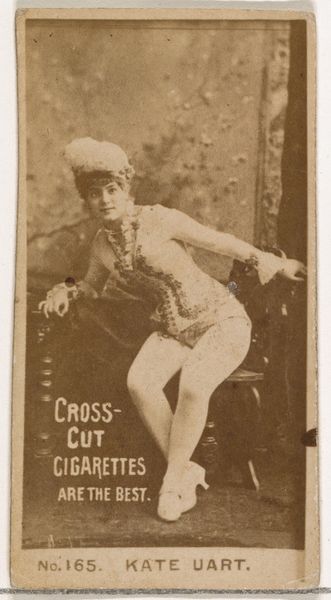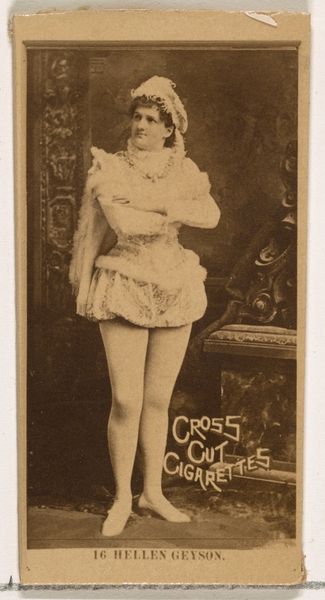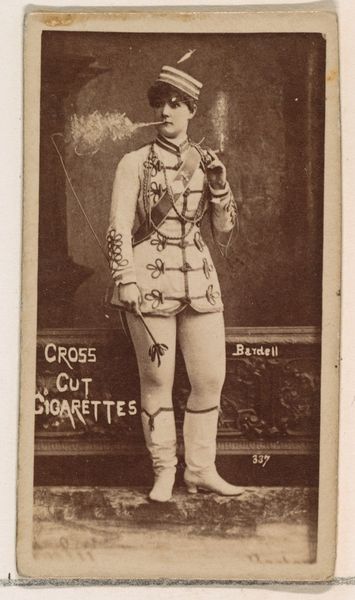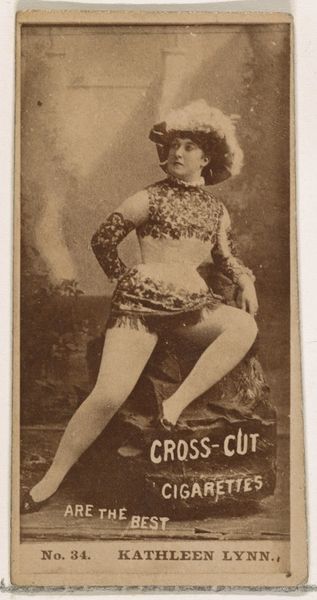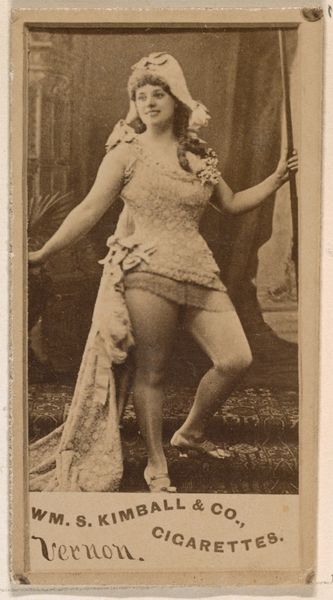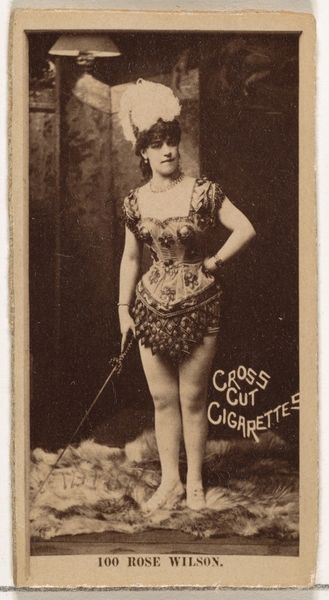
Card Number 79, Conti, from the Actors and Actresses series (N145-1) issued by Duke Sons & Co. to promote Cross Cut Cigarettes 1880s
0:00
0:00
print, photography
#
portrait
#
16_19th-century
#
pictorialism
# print
#
photography
#
erotic-art
Dimensions: Sheet: 2 1/2 × 1 3/8 in. (6.4 × 3.5 cm)
Copyright: Public Domain
Editor: Here we have a cigarette card, "Card Number 79, Conti, from the Actors and Actresses series," made in the 1880s by W. Duke, Sons & Co. It's a sepia photograph, and I find the theatrical pose quite striking for a tobacco advertisement. How do you interpret this work, considering its imagery and purpose? Curator: It’s fascinating how ephemeral objects like these become time capsules. Consider the overt staging: the carefully constructed set, her costume referencing leaves or feathers... it points to an elaborate allegory. Do you see how her averted gaze and poised hand create a sense of... withholding? Editor: I do! It's almost like she's a forest nymph who's been caught off guard. But how does this connect to selling cigarettes? Curator: Precisely. The advertisers use the semiotics of classical beauty and a hint of the forbidden to associate their product with elevated cultural values. This interplay speaks volumes about the aspirations of the target consumer. Tobacco becomes a symbol of sophistication and a gateway to a world of refined pleasure. What enduring myths do you think they're tapping into? Editor: Perhaps the romantic idea of nature and beauty intertwined with a sense of unattainable allure? It’s almost like an advertisement for desire itself. Curator: Yes! And notice how that manufactured 'naturalness', along with the woman’s costume, becomes deeply coded. These symbols continue to influence how we understand femininity and consumerism even today. Editor: It's amazing how much meaning can be packed into something so small. I'll never look at old advertisements the same way again. Curator: Indeed. By understanding the symbols they employ, we gain insight into not only past values but also the continuity of cultural desires that shape our present.
Comments
No comments
Be the first to comment and join the conversation on the ultimate creative platform.

